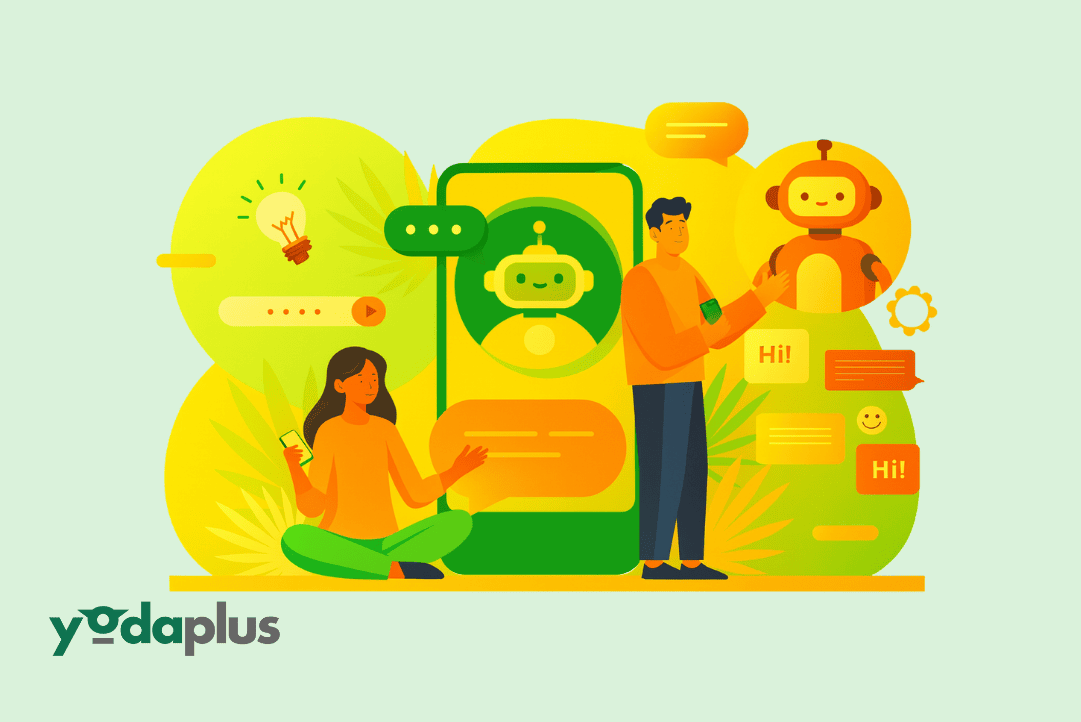
Designing Artificial Intelligence Agents That Stay Robust and Aligned
September 26, 2025 By Yodaplus
Artificial Intelligence (AI) has moved from research labs to real-world applications across industries. From Conversational AI in customer service to AI in logistics, companies are learning that robust design is essential for safe and scalable adoption. The next stage of innovation lies in building AI agents that are not only powerful but also aligned with human goals, resilient under stress, and resistant to harmful behaviors.
In this guide, we explore what makes Agentic AI different, why alignment matters, and how frameworks like MCP and agentic frameworks are helping create intelligent agents for business, supply chain, and beyond.
Why Robust AI Agents Matter
An AI agent is more than a program that follows commands. It is an autonomous system capable of decision-making, resource coordination, and interacting with humans and other systems. Poorly designed agents can misinterpret goals, misuse data, or even cause disruptions in workflows.
To make Artificial Intelligence in business reliable, agents must be:
-
Aligned with organizational objectives.
-
Resistant to manipulation or harmful behaviors.
-
Robust in handling unexpected data, complex tasks, and evolving environments.
What Is Artificial Intelligence Alignment?
Many ask: What is AI and how do we ensure it works for us? Alignment is the practice of making sure that an AI system acts in ways that reflect human intent. This is especially important for autonomous AI and multi-agent systems where small misalignments can amplify into larger risks.
Frameworks like explainable AI and responsible AI practices provide methods to monitor decision-making, while AI risk management focuses on detecting and preventing harmful outcomes.
The Role of Agentic AI in Safe Workflows
Agentic AI represents a shift from passive models to autonomous agents and workflow agents that collaborate, self-improve, and act in real time. Unlike traditional systems, these AI applications manage dynamic workflows and support AI-powered automation in areas like:
-
Finance: AI-driven analytics for equity research.
-
Supply chains: AI in supply chain optimization and predictive planning.
-
Retail: Intelligent customer insights and automation.
By using knowledge-based systems and semantic search, agents can integrate large volumes of structured and unstructured data, ensuring reliable and explainable results.
Key Design Principles for Robust AI Agents
1. Clarity of Goals
Every AI system must have clearly defined objectives. Whether it is machine learning for risk analysis or crew AI for maritime operations, clarity prevents divergence from intended outcomes.
2. Resilience Against Harmful Inputs
Agents must be designed to handle misinformation, adversarial data, and errors. Techniques like self-supervised learning, AI model training, and vector embeddings strengthen performance in unpredictable environments.
3. Alignment With Human Oversight
Human-in-the-loop design ensures accountability. For example, autogen AI and generative AI software enable adaptive workflows, but oversight ensures they do not drift into unsafe or unethical behaviors.
4. Scalable Workflows
Agents should support multi-agent systems and agentic AI platforms, allowing businesses to expand use cases without sacrificing reliability.
5. Transparency and Monitoring
Using AI-driven analytics and reliable AI frameworks, organizations can monitor behavior, generate audit trails, and adapt policies as regulations evolve.
The Role of Frameworks Like MCP and AgentOS
The Model Context Protocol (MCP) is becoming central to how agents manage memory, context, and goals. It allows different AI frameworks and AI agent software to collaborate efficiently. By connecting LLMs, NLP, and data mining, MCP ensures that agents remain both useful and safe.
Similarly, agentic frameworks like those described in our blog on frameworks make it easier to design intelligent agents that are aligned, auditable, and adaptable.
Real-World Applications of Robust AI Agents
-
Business Operations: AI-powered automation reduces repetitive tasks and supports AI innovation.
-
Logistics: AI in logistics helps predict delays and optimize fleet routes with AI workflows.
-
Retail: Retail supply chain digitization benefits from agents that understand demand signals and inventory needs.
-
Finance: Generative AI supports smarter reporting and AI agents assist with real-time decision-making.
These examples prove that AI applications are not limited to research; they are shaping industries with measurable results.
Challenges in Building Robust AI Agents
While the promise of Artificial Intelligence solutions is strong, challenges remain:
-
Standardization across industries and platforms.
-
Scalability of generative AI tools across global enterprises.
-
Responsible AI practices that ensure fairness and transparency.
-
Future of AI readiness in handling regulations and ethical risks.
The future of agentic AI tools will depend on collaboration between enterprises, regulators, and technology providers.
Preparing for the Future
To succeed with AI agents in business, companies must combine Deep Learning, Neural Networks, and AI workflows with robust design. Investing in AI-powered automation, AI-driven analytics, and reliable AI practices ensures that agents remain aligned, transparent, and ready to handle evolving challenges.
At Yodaplus, we help organizations design agentic AI solutions that bring together frameworks, workflows, and tools into resilient systems. With the right foundation, autonomous agents will not just perform tasks but also become trusted digital collaborators.
Conclusion
The design of Artificial Intelligence agents is not just about performance. It is about building robust, aligned, and safe systems that scale responsibly. By combining MCP, agentic frameworks, and AI innovation, businesses can prepare for a future where AI agents support every decision with intelligence, reliability, and accountability.
The journey toward autonomous AI and AI-powered automation is underway. The key is ensuring these agents are designed with resilience, alignment, and trust at their core. With Yodaplus’ Artificial Intelligence Solutions, organizations can turn this vision into practice—building agents that are explainable, reliable, and ready for real-world deployment.